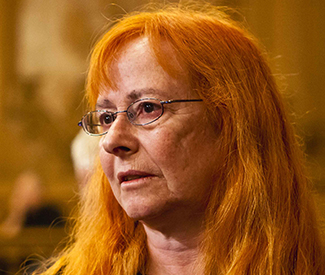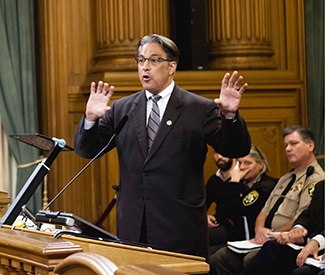STREET FIGHT Professor Don Shoup, an icon in San Francisco planning circles, is famous for illuminating that there is no such thing as free parking. In his voluminous book The High Cost of Free Parking, Shoup breaks-down the costs of building parking spaces and the land underneath.
Beyond that there’s lighting, insurance, security, maintenance, ventilation, financing, contracting, and surveying costs. There’s also the additional property tax on the parking, and piling onto that, the vast external costs to society with congestion and pollution from car trips generated by parking.
While all of this might seem obvious, the virtue in Shoup’s work was to show how the costs of parking are regressive and passed onto communities, especially low income households and non-drivers. For example, a grocery store bundles parking into the price of food and this is disproportionately borne by non-drivers.
In a sense, free parking causes the gentrification of food.
In San Francisco, underground parking costs anywhere from $80,000 to $100,000 per space to construct. In the proposed supermarket at 555 Fulton Street, the 77 spaces proposed underneath the store will cost anywhere from $6.1 million to $7.7 million to build.
That’s millions that will be passed on to a grocery store tenant and ultimately to shoppers. And that’s just to build, not operate, the parking. This adds more burden to the already tight pocketbooks in a gentrifying city like San Francisco.
Parking also complicates the issue of grocery stores and formula retail, making developers prefer a chain store because it can access the financing to build parking. So parking literally “drives-up” the rents for tenants seeking to lease the space. This makes it more difficult to find an affordable, local, non-chain grocer while also translating into higher food prices, since grocers transfer the cost of parking onto all shoppers regardless of how they got there and regardless of the shoppers’ income.
All of this came to a head last week at the San Francisco Planning Commission hearing on 555 Fulton, a proposed mixed use development that might include a grocery store. The Commission voted 4-2 to lift a formula retail ban on this site, concluding that only a chain store is “economically viable.” (Disclosure: I publicly advocated against that exemption as a member of the Hayes Valley Neighborhood Association).
This was not just a blow to the city’s unique character in terms of guarding against chain stores. It undercuts sustainable and affordable urbanism and will lead to gentrified food. Here’s a brief summary of what happened:
In the early 2000s, the old Christopher Dairy at 555 Fulton, between Laguna and Octavia, was identified as a good location for a supermarket as part of a larger mixed-use development. The site was folded into the Hayes Valley formula retail ban to encourage an independent, community-based supermarket with fresh produce, high quality food affordable to nearby residents, and jobs for locals.
In 2010, the Planning Commission approved the first iteration of this project, with 136 housing units above a non-chain grocery store. Neighbors were very excited to have a local supermarket to serve the whole community and the developer did not try to circumvent the chain store ban. The community and Planning Department were working together.
In late 2012, the site and its entitlements were sold to a new developer, Fulton Street Ventures. It immediately informed the community that it would seek to lift the ban. HVNA unanimously opposed lifting the ban and Planning Department staff supported HVNA’s position. At that point, it seemed that the planners had read and understood Shoup.
For its part, HVNA compiled a list of potential non-chain store candidates and proposed creative ways to make the site work for a locally owned business, with perhaps some space allotted to a hardware store or other neighborhood-serving shops. HVNA also proposed reducing the parking at the site in order to make the store affordable.
The Market and Octavia Plan, which includes 555 Fulton, allows a grocery store to have less parking than the 77 the developer wants, and even zero parking. The developer could eliminate some or all of the parking, reduce construction costs, and reduce the asking price for a lease. This area is flat, incredibly walkable and proximate to thousands of existing residents, with thousands more on the way.
A car-free or car-lite grocery store can deploy innovative ways of delivering groceries, such as a jitney service or delivery vans, for those who need such service, and to limit the amount of store parking to a small number of car share and disabled parking stalls. This kind of grocery store would be at the cutting edge of truly sustainable urbanism, while also providing more affordability to all residents of the community.
Yet another Shoup axiom is “Planning for parking is more a political than a professional activity.” Instead of being creative, Fulton Ventures balked at the parking ideas and employed divisive race-baiting to push its profit-driven agenda. It financed a quiet campaign to accuse anyone supporting the formula retail ban and reducing parking as racist and elitist. It leaned heavily on City Hall and somehow got the Planning Department to suddenly retract its support for upholding the chain store ban. Sup. London Breed, who remained publicly detached, insisted that all she cared about was an affordable supermarket, but she offered no path to achieve it.
In a confusing Oct. 3 hearing, supporters of Fulton Ventures LLC made below-the-belt public comments that seemed to come straight out of a Tea Party playbook. It was tough to watch. Their position was that a chain store with excessive underground parking was the only way to an affordable grocer — anything short of that was racist. The commission voted 4-2 to lift the ban.
By lifting the formula retail ban, the city lost leverage for making the store affordable while also providing fresh food for thousands of people within walking distance. And the many car-free households of the Western Addition and Hayes Valley will get to breathe the car fumes from upscale shoppers. The commission gentrified food.
All is not lost though. The damage done by the Planning Commission can be overturned or fixed at the Board of Supervisors. Breed states she cares about affordability, local small business, and the city’s transit-first policies. She can put conditions on this project that reduces the parking, or decouples the parking from the lease for the commercial floor space, thus making the project economically viable for an affordable grocer. She can demand other creative and sustainable solutions which planners so far have not considered. She doesn’t have to give it away to a chain store. And if you care for affordable groceries with less driving, and want to stop the gentrification of food, write her and let her know.






